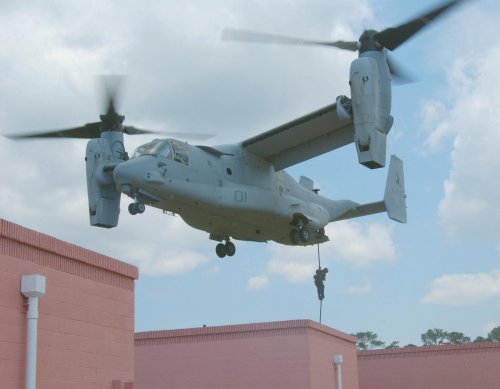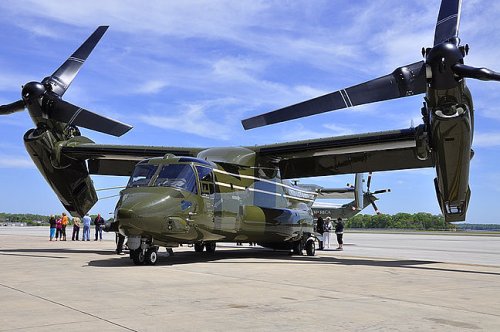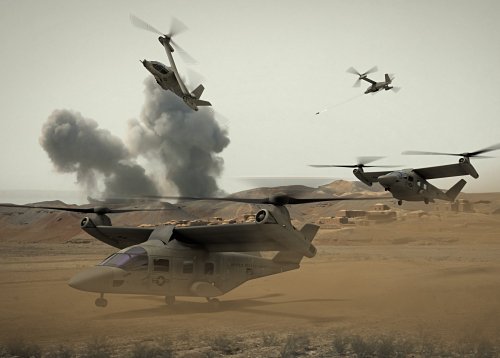Regarding Presidential use, I'm not sure how you can state the US President will never get one since there are already 12 being delivered to HMX-1 for support roles and to fly the press and other personnel.
Saying never was a bit harsh on the V-22, I admit. I was simply referring to this piece which I remember reading last week
http://www.defense-aerospace.com/articles-view/feature/5/144961/v_22-%E2%80%98reputation-remake%E2%80%99-falls-flat.html
Ulsh noted that last month the first of 12 Ospreys joined the fleet of aircraft used for presidential travel, a significant endorsement of the aircraft. They’ll be used to transport the president’s staff and journalists, though not the commander in chief.
The program to find a replacement for the Presidents current helicopter has recently been restarted with the V-22 being possibly one of the candidates.
http://news.yahoo.com/u-navy-moves-ahead-presidential-helicopter-program-183652898.html
Boeing Co has said it is also studying a possible bid based on its H-47 Chinook helicopter or the V-22 Osprey tilt-rotor aircraft that it builds with Textron Inc's Bell Helicopter unit.
So, officially the V-22 is still far from being Marine Force one. Don't get me wrong thought. I'd love for the V-22 to take that roll but the reality is that they may need a solution with a
much more benign footprint. Imagine how much reporters are going to love it when they learn that because of the huge V-22 downwash, they now have to wait 3 times further from the landing zone to take pictures.
There's actually a complexity you left out regarding the concept under discussion. Specifically, since its propellors are not in line with the with the engines (as they could be on an engine tilting Tilt-Rotor but not on a fixed nacelle one)
You are right. An that would have been the case had I compared the "hybrid tandem rotor" (as illustrated bellow) with V-22. However, Bell's JMR/FTL proposal is different than V-22. I was specifically referring to the V-280 the whole time which also has fixed engines.
So again
in terms of the way the engines and the propellers connect:
- V-22 (Apples),
- V-280 (Oranges),
- "Hybrid Tandem Wing" (Oranges),
- "Variable Incident Wing" (Oranges)
I don't think I'm using different fruits here. It seems the the rotor-wing interaction is going to be a function how much the blades overlap the wing in Tilt-Rotor or VI wing some will get deflected aft and down because the wing has some tilt on it in the hover, but it still going to have the downforce impinging on it as a function of wing area and overlap. It will be reduced in forward flight because of the effect that forward motion will have on the displaced air, but it'll still be impinging on the wing.
This is all 100% correct. What I meant is that you should not compare the aircraft configuration of a Tilt Rotor with the STOVL configuration of a VI wing which to me is comparing apples and oranges.
Also, the program is called Future
Vertical Lift for a reason. It's Future "best possible vertical" lift, not Future "needs to fly like an airplane but hey, by the way, can you make it land like a helicopter" lift. So IMHO, the advantage a VI wing has in less wing downwash (because of the tilt) is much more important than the airplane mode of the Tilt-Rotor.
A 57mm hot in the nacelle of a Tilt-Rotor or this is pretty much going to take out everything, and with this concept you have the additional vulnerable area where the wing tilting mechanism is.
Sorry but there is a complete lack of logic here.
1st, there is no requirement to for any helicopter to withstand a 57mm round, or a missile or a tank shell, or a 2000lb laser guided bomb of the kind an F-15E dropped on a Iraqi chopper in 1991. A hit by 23mm shell is
the most likely scenario to test against.
2nd, I am not adding anything. Bell is replacing 2 rotating nacelle titling mechanisms with 1 pneumatic one that will be far more reliable because its a more efficient way to achieve the same effect.
Take a home broom and ask yourself this. Which the most efficient way to tilt the broom from horizontal to 25 angle?
a) (V-22) grab the broom around the middle and twist your arm?
b) (V-280) grab the broom by the furthest corner of the stick and twist your arm? Ouch
c) (VI wing) put the handling stick against the wall and just lift the broom part up or down.
I am pretty sure, unless you are really strong, you won't be able to do option b)
So the wing tilting mechanism is by the laws of physics is a much more efficient, simpler and hence reliable and battle resistant solution to tilting the propellers from Vertical to STOVL mode.
3rd, spreading critical systems around the aircraft is a basic survivability concept. Its self evident.
On a conventional helo, you have a lot of moving parts in the rotor hub, and it gets really complex in there. Possibly even more so for X2, but not to a dangerous or unacceptable level.
Yes, you are right here. All till-rotor / VI wing solutions do seam to have an aircraft like propellers which have twisted blades attached to the center rotating shaft while conventional helicopters have blades which are mounted via joints as they need to be able to chance angle of attack. X2 and AH-56 Cheyenne operate differently though.









